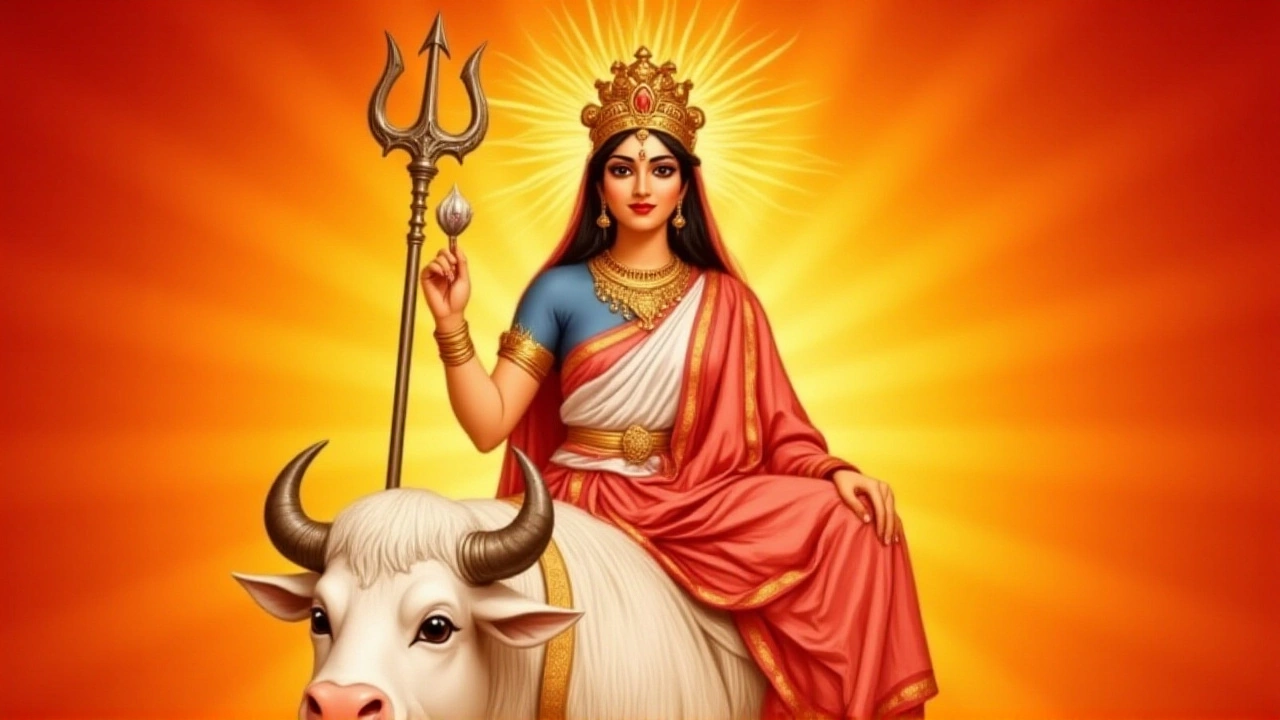Wednesday, 2 April 2025, marks Panchami – the fifth day of Chaitra Navratri dedicated to Goddess Skandamata. The day runs from 2:35 am to 11:52 pm, with Brahma Muhurat (04:58‑05:45 am) and Amrit Kalam (06:39 am) offering prime slots for worship. Yellow attire, banana offerings and the mantra “Om Hreem Saha Skandmatryai Namah” are recommended. The day also overlaps with Lakshmi Panchami, adding a layer of prosperity‑focused prayers.
Goddess Skandamata – Who She Is and Why She Matters
Did you know Skandamata is the only Hindu goddess who literally carries her son on her lap? She represents a mother who protects, nurtures, and guides the warrior god Skanda. If you’ve seen her image in temples, you’ll notice a fierce yet gentle aura – that’s the power of a mother who also fights for good.
Mythology in a Nutshell
According to legend, Skanda (also called Kartikeya) was born to defeat the demon Tarakasura. Parvati, his mother, took the form of Skandamata to give birth in a forest lake. She held the baby in her arms, showing that strength and love can coexist. The story emphasizes that a mother’s devotion can create a champion for justice.
How People Honor Skandamata
Worshipping Skandamata is simple. Light a lamp, offer fresh flowers, and place a small statue of the goddess beside an image of Skanda. Recite the Skandamata mantra – “Om Skandamataye Namah” – while you focus on gratitude for the mothers in your life. Many devotees also visit Durga temples during the Navratri festival, where Skandamata is celebrated on the fourth day.
Practical tip: keep a bowl of water near your altar. In the stories, Skandamata emerged from a lake, so water symbolizes her purity and nurturing energy. Refresh the water daily to keep the space alive.
Another easy practice is to write a short note thanking your own mother or a mother figure. Fold it and place it on the altar. This small act links personal gratitude with the divine love Skandamata embodies.
When you’re at a temple, look for the four-armed form holding a spear and a lotus. The spear represents her role in protecting the world, while the lotus shows spiritual growth. Even if you can’t visit a temple, a picture on your wall can serve as a reminder of her qualities.
Skandamata’s influence goes beyond rituals. Many people see her as an archetype of strong motherhood – someone who can raise a hero while staying grounded. In modern life, that can mean balancing career, family, and personal dreams without losing compassion.
If you’re a parent, channel Skandamata’s energy by encouraging your children’s strengths. Celebrate small victories, just as she celebrated Skanda’s early triumphs over evil. This approach builds confidence and a sense of purpose.
For those interested in deeper study, the "Skanda Purana" contains detailed accounts of the goddess’s deeds. Skipping straight to the chapters about Skandamata gives you a clear picture without getting lost in the larger text.
Lastly, remember that Skandamata’s story is about partnership. She didn’t act alone; she worked with Shiva, Vishnu, and the celestial forces. In your own life, collaborate with friends and community when tackling big challenges. That’s the collaborative spirit the goddess teaches.
Whether you’re new to Hindu mythology or looking for a fresh perspective on motherhood, Skandamata offers a powerful example of love that fights, protects, and uplifts. Use the simple practices above to bring her presence into daily life, and you’ll notice a subtle shift toward patience and strength.
 28
Sep
28
Sep